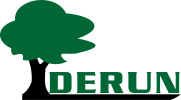Views: 1 Author: Site Editor Publish Time: 2023-09-05 Origin: Site











Organic compounds are most attracted to carbon.Activated carbon will eliminate very few inorganic compounds. The molecular weight, polarity, solubility in water, temperature of the fluid stream, and concentration in the stream are all elements that influence the carbon's capacity to remove the substance. Common target substances removed by carbon include benzene, toluene, xylene, lubricants, and several chlorinated compounds. Other important applications for activated carbon include the elimination of odors and color pollution.
We sell activated carbon manufactured from bituminous coal, lignite coal, coconut shell, and wood at General Carbon.
There are two ways to generate activated carbon; however, in this post, we will show you the most efficient method that produces higher-quality and purer activated carbon. Activated carbon is created by heating a tank without oxygen to temperatures ranging from 600 to 900 degrees Celsius. Following that, the carbon is exposed to various chemicals, most often argon and nitrogen, before being put in a tank and superheated to 600–1200 degrees Celsius. The carbon is exposed to steam and oxygen for the second time when it is placed in the heat tank. This method creates a pore structure and considerably enhances the useful surface area of the carbon.
The first step in employing carbon is deciding whether to treat a liquid or vapor stream. To lessen the pressure drop through the bed, big carbon particles are best used to treat air. Smaller particles are employed in liquid applications to shorten the distance that chemicals must travel to become absorbed inside the carbon. Carbon particles of various sizes are available, depending on whether your project is dealing with vapor or liquid. There are several substrates to consider, such as coal or coconut shell-based carbon. Speak with a General Carbon professional to choose the right product for your needs.
Carbon is commonly used in column contactors. Adsorbers are columns that are particularly constructed for air and water. The design accounts for loading (the volume of fluid per area cross section), contact time (a minimum contact time is necessary to ensure required removal), and pressure drop via the adsorber (required to size container pressure rating and fan/pump design rating). All of the prerequisites for effective adsorber design are pre-engineered into the standard General Carbon adsorbers. We can also create custom designs for uses that fall outside of the standard spectrum.
Many factors influence carbon's chemical capability. The longevity of a carbon bed is affected by the molecular weight of the chemical being removed, the concentration of the chemical in the treated stream, other chemicals in the treated stream, the operating temperature of the system, and the polarity of the chemical being removed.
Activated carbon is an adsorbent. Absorption is frequently linked to the chemical action of sopping up water. Water is thoroughly incorporated into the sponge and is not restricted to the surface region. Adsorption, on the other hand, is a process in which molecules only adhere to the surface area. Because activated carbon is a porous substance, it has a huge surface area, as previously stated. The undesirable material adheres to the surface of the carbon particles.
What Are The Differences Between Impregnated Activated Carbon And Ordinary Activated Carbon?
Application of coal-based activated carbon in environmental protection field
The Principle And Effect of Activated Carbon Adsorption of Formaldehyde
Application of coal-based activated carbon in flue gas desulfurization and denitrification
